10 Winter Camping Tips for Beginners
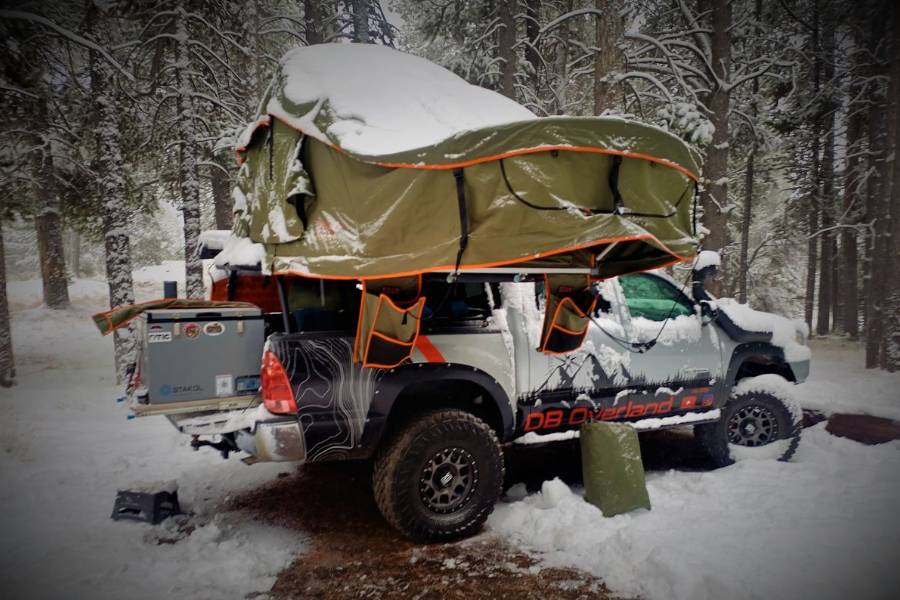
The pristine beauty of snow-covered landscapes and the peaceful solitude of winter camping create memories that last a lifetime. However, to ensure a safe and enjoyable outing, especially for beginners, it’s essential to be equipped with the right winter camping tips and gear.
After years of winter camping experiences in the United States and thorough preparations for the challenging environment of the Canadian High Arctic, I am eager to share valuable advice to ensure that everyone can have a fantastic winter camping experience. This guide presents ten invaluable tips tailored specifically for those who are new to the world of cold-weather camping.
Essential Tips for an Unforgettable Winter Camping Experience
From staying warm in frigid temperatures to navigating snowy terrains, these insights enhance your winter camping journey. So, gear up and get ready to make the most of the winter wonderland awaiting you!
1. Put Safety First
The difference between winter camping from other seasons is the harsh weather and terrain conditions that can be encountered. Adequate preparation for your departure becomes a non-negotiable imperative in this environment.
Check the weather forecast and take the equipment that is suitable for the expected temperatures and precipitation should be more than ever a reflex. Similarly, consulting the avalanche bulletin is crucial, and this information can be complemented by examining the map of the slopes to verify that the chosen campsite is not situated in a high-risk zone.
At the campsite, it’s essential to make the winter tent as visible as possible, particularly from an aerial perspective. Many manufacturers offer their “four-season” tent models in bright, easily visible colors such as red or orange. The intention is not to conceal them but rather to enhance visibility. Also, prioritizing security equipment is crucial. Keep a charged phone close to you at all times to prevent the battery from draining.
Let’s be clear, there is no shame in giving up a campsite if you don’t feel well.
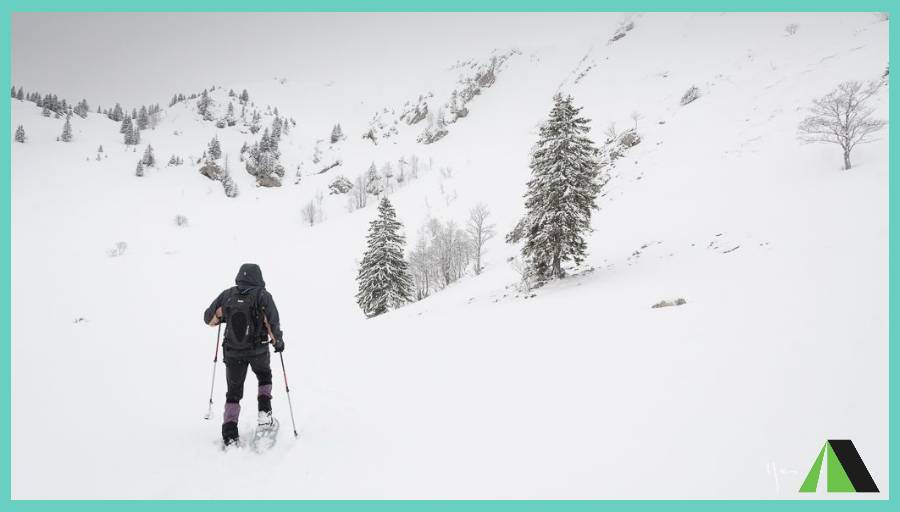
2. Choose the Right Equipment
Insulation is the key consideration for winter camping equipment, as the primary source of warmth at the campsite is the heat generated by your own body. With that in mind, you quickly understand that it’s useless to have the best tent on the market if you don’t take the trouble to block the cold air inlets at the bottom of the canvas with snow.
It is also useless to have a -45°C bag if you sleep on your summer mattress, a real energy sieve. The equipment must be insulating, coherent, and versatile. Armed with a good mattress, you can use your -10°C sleeping bag, chosen not too tight, to sleep with your down jacket and stay comfortably installed down to -20°C.
3. Test Your Equipment and Know-How
Before embarking on a grand adventure far from civilization, it’s wise to conduct a preliminary test near a refuge, a village, or your vehicle. This approach allows you to commence the journey without undue pressure and dismantle the camp if the equipment proves less efficient than expected or if conditions become more challenging—without jeopardizing safety or potentially discouraging future attempts.
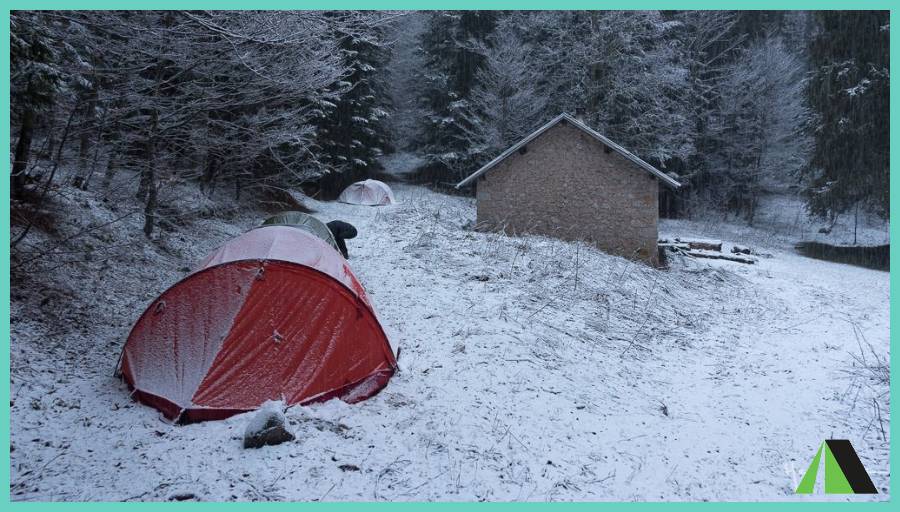
4. Choose Your Location Well
Excluding avalanche areas, what is the ideal location for winter camping? Of course, a nice panorama does not spoil the pleasure but with very short days, it is not as important as in summer.
To tell the truth, the two elements that I take into account; the most are the shelter from the prevailing wind because it offers a more serene and less cold night and the morning sun. It is not a decisive criterion, but warming up in the rays of the morning sun, and breaking camp in the golden light is part of the pleasures of winter camping and allows you to start the day under the best auspices.
5. Give Yourself Time
Numb fingers, strong wind which requires important precautions, excavation of the snow to obtain a flat surface… Setting up a tent in the snow takes time, a lot of time sometimes. Depending on the conditions, I took up to 3 hours to complete all the operations. And as night falls early in winter, it is better to give yourself time to do things calmly and enjoy camping!
6. Prepare for the Storm
I don’t think there’s anything worse than having to get up in the middle of the night to face a gale that the weather forecast hadn’t predicted. Nothing is more stressful than having to cling to a tent battered by the storm and which threatens to tear. The worst never disappoints and anything can happen in the middle of the night. A well-secured tent, with each anchor point carefully placed, each guy line taut with snow anchors, the bottom of the canvas carefully protected by a bead of snow, and a low wall erected to slow down the wind … and the storm can blow!
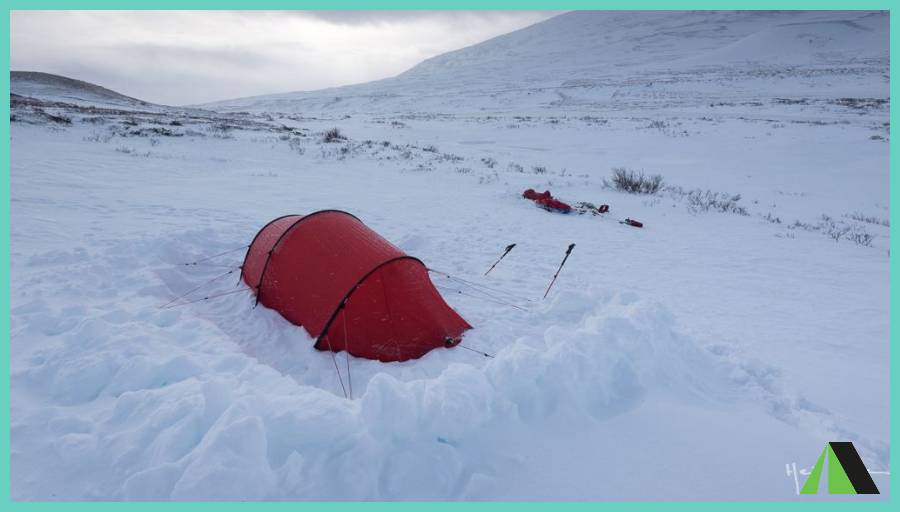
7. Be Concerned About Water
Water is a major issue at the campsite, I’m not telling you anything. And it is not because we are less thirsty in winter that we do not become dehydrated, quite the contrary. Worse, dehydration would be a factor favoring frostbite. The ideal solution is to find an unfrozen water point. Torrents and springs provide abundant and quickly usable water. Of course, in the absence of a torrent, you can always melt snow. But this is a time-consuming and fuel-intensive operation!
8. Eat Well
In winter camping, enjoying hot meals isn’t just a pleasure; it’s a vital necessity, especially with efficient stoves like the MSR Windboiler or those allowing gas cartridge inversion. With temperatures down to -5°C or even -10°C, pressure-regulated gas stoves with a butane-propane mixture are suitable. However, colder temperatures or prolonged outings require petrol stoves, like those using white gas (gasoline C), known for its cold resistance and lower maintenance needs.
For more demanding ventures, packing spare parts, and a surplus of gas or gasoline is advisable. Determining the exact quantity involves finding a balance between having enough for unforeseen circumstances and avoiding unnecessary backpack weight. While minimizing consumption is a priority on-site, factors like water temperature, altitude, and wind exposure can significantly impact fuel usage.
In colder conditions, applying additional strategies, such as using the provided aluminum windshield, avoiding unnecessary boiling, and utilizing an insulated container becomes crucial to conserve heat.
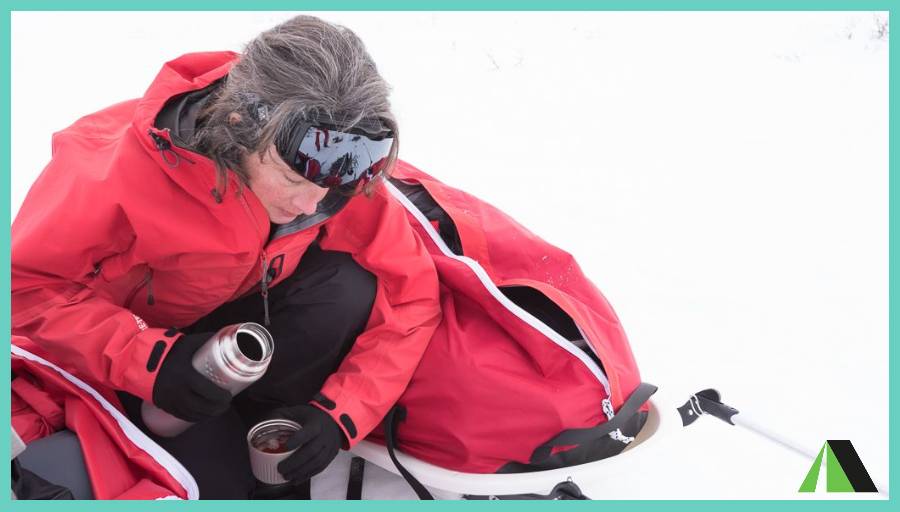
9. Be Ordered and Organized
In winter, there is no room for clutter. Anything lying around is in danger of being buried in snow or blown away. And what could be more infuriating than not being able to light your stove because the lighter is lying around who knows where? Finally, being orderly means not risking leaving behind waste that will reappear when the snow melts.
10. Get Warm Before Slipping Into the Sleeping Bag
As I have already said, down is only an insulator. The thicker it is, the more it reduces your calorie loss. But there is no chance that it will warm you up!
To keep warm, here are my three solutions…
The first is the simplest, it is not to be cold! As soon as I arrive at the campsite when I know that I will no longer be active, I put on the most thermal layers, protecting my head, neck, and torso first and foremost with, for example, a hooded down jacket, a hat warmer than that used while traveling.
The second solution is to do some exercise before slipping into the sleeping bag. Jumping on the spot, running for the last pee, raising the body temperature – but above all not to the point of sweating!
Finally, for safety, I always have an aluminum bottle with a screw cap, SIGG type, which I can fill and use as a hot water bottle. For more comfort, there are even neoprene covers to reduce the risk of burning yourself and make contact more pleasant.
Conclusion
When we’re planning a very cold camping trip, we generally think of specialized equipment: big down jacket, thick down, bulky, and expensive equipment. It’s true, camping at -30°C cannot be improvised with unsuitable equipment. But the control of its material, the constitution of a general-purpose unit, and the knowledge of good behaviors are equally important.
This knowledge will gradually open the door to extraordinary camping under skies of unique clarity and in the cozy atmosphere of snowy landscapes. Wishing you a joy-filled and happy camping adventure!





